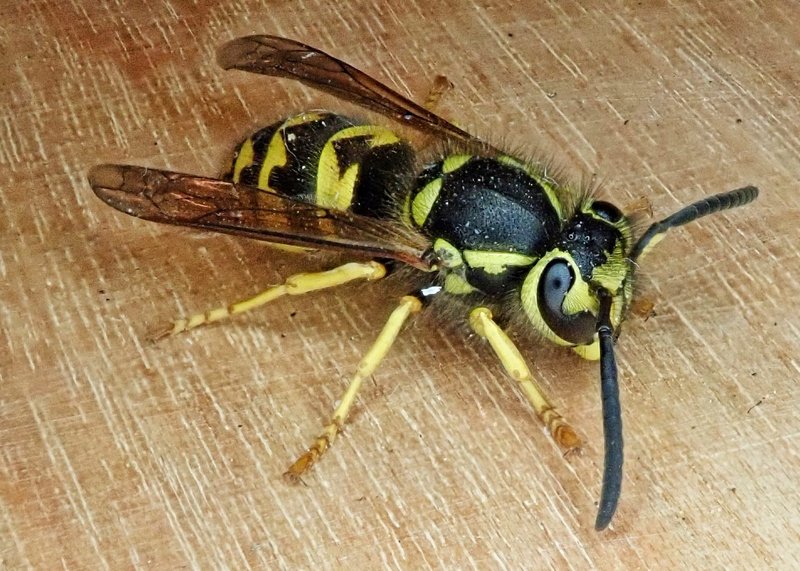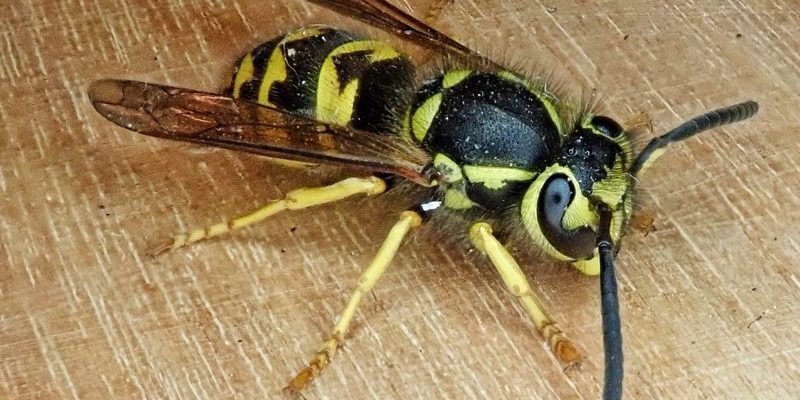
Yellowjackets are not your run-of-the-mill insects. They belong to the wasp family and are known for their striking black and yellow coloration. But beyond their infamous stings, these little creatures are packed with interesting behaviors and societal structures. Researchers have been delving into their world, using methods that range from field observations to genetic analysis. Let’s dive into some of the exciting ways scientists have studied yellowjackets and what they’ve learned along the way.
The Life Cycle of Yellowjackets
Understanding the life cycle of yellowjackets is one of the first steps scientists take to study them effectively. These wasps go through four distinct stages: egg, larva, pupa, and adult. Scientists often start their research by observing nests in the wild. They can see how the colony develops from just a few founding queens in the spring to a bustling hive full of workers by late summer.
Eggs and Larvae: Yellowjacket queens lay eggs in individual cells within the nest. The larvae are fed by adult workers, which gather protein-rich food sources. Watching how these larvae grow gives scientists insights into the nutritional needs of yellowjackets and how resource availability affects colony success. It’s kind of like observing a daycare, where the nutrition provided can determine the future leaders of the colony.
Pupation: After the larval stage, yellowjackets enter the pupal phase, where they undergo metamorphosis. Researchers sometimes collect pupae to study their development under controlled conditions. This stage is critical for understanding how environmental factors, like temperature and humidity, impact their development and survival.
Adult Emergence: Finally, when the pupae mature, you have adult yellowjackets ready to take on the world. This is when their social roles become more defined. Some become workers, while others may emerge as new queens. Studying this emergence gives scientists a peek into the dynamics of the yellowjacket society and how roles shift within the colony.
Behavioral Studies of Yellowjackets
Here’s the thing—yellowjackets are social insects with complex behaviors that pique the interest of many scientists. They live in colonies that can range from a handful of individuals to several thousand. Observing their interactions is like watching a well-choreographed dance, albeit with a lot more buzzing and a few stings.
Communication: Scientists have been fascinated by how yellowjackets communicate with one another. They use a combination of chemical signals, known as pheromones, and physical cues. Researchers conduct experiments by altering the environment around a colony to see how the wasps react. When a danger is near, such as a predator, yellowjackets produce alarm pheromones to alert their friends. This communication is crucial for the survival of the colony, and it’s something scientists are keen to understand fully.
Foraging Behavior: Another area of interest is their foraging behavior. Scientists often set up feeding stations to observe how yellowjackets scout for food. They want to know what types of food attract them and how they decide where to forage. By changing the type of food offered, researchers can gain insights into their preferences and dietary needs. It’s like conducting a culinary experiment where yellowjackets are the guests at a buffet!
Aggression and Defense: Yellowjackets are known for their aggressive tendencies, especially when protecting their nests. Studies have been conducted to see how different factors—like the time of day or the presence of intruders—affect their defensive behavior. Understanding these triggers can help us manage human-wasp conflicts better and avoid unwanted stings.
Ecological Impact of Yellowjackets
Yellowjackets aren’t just important because of their stings or annoying habits; they play a significant role in the ecosystem. Scientists study their ecological impact to understand how they interact with other species and their environment.
Pollination: Though often overlooked, yellowjackets can contribute to pollination. They visit flowers while foraging for sugary substances and can inadvertently transfer pollen from one bloom to another. This makes them unexpected allies in the world of plant reproduction. Researchers are exploring which plants benefit from yellowjacket visits and how this influences local ecosystems.
Predator and Prey Dynamics: Yellowjackets are also both predators and prey. They hunt other insects, helping control pest populations. By studying their hunting patterns, scientists can assess their role in maintaining balance within ecosystems. You might think of them as nature’s little enforcers, keeping the insect world in check.
Food Web Interactions: Additionally, yellowjackets are preyed upon by birds, mammals, and other insects. Understanding these dynamics helps scientists gauge their position in the food web. The balance between their predatory and prey relationships contributes to overall biodiversity, which is essential for a healthy environment.
Health Implications of Yellowjackets
Studying yellowjackets isn’t just an academic exercise; it has real-world implications for public health. The venom of yellowjackets can cause allergic reactions in some individuals, and understanding their behavior can help mitigate risks.
Allergic Reactions: Scientists conduct studies to determine how common allergic reactions are to yellowjacket stings. They analyze data from various regions to identify patterns in sting incidents. This information is valuable for creating awareness and educating the public about risks, especially for those who might be allergic.
Sting Prevention: Another focus is on finding ways to prevent yellowjacket stings. Researchers explore various strategies, such as nest identification and removal techniques, to minimize human-wasp interactions. They could suggest methods to keep yellowjackets away from picnics or outdoor activities.
Disease Transmission: There’s also ongoing research into the potential for yellowjackets to transmit diseases. Although they aren’t known to spread diseases like mosquitoes do, understanding their role in the environment is crucial for public health. Monitoring their populations can give scientists insights into emerging health issues.
Scientific Advances in Yellowjacket Research
The study of yellowjackets has come a long way, thanks to advances in technology and scientific methods. Modern scientists are using a variety of tools to gain deeper insights into these fascinating creatures.
Genetic Analysis: One of the most exciting developments is the use of genetic analysis. By studying the DNA of yellowjackets, scientists can learn about their family structures, mating behaviors, and even how they adapt to changing environments. This genetic information can help researchers identify different species and understand their evolutionary history.
Field Studies and Technology: Field studies have also benefitted from technological advances. For example, researchers now use cameras and remote monitoring devices to observe yellowjackets in their natural habitats. These tools allow for more detailed and accurate data collection without disturbing the nests.
Modeling and Simulation: Another area of interest is the use of mathematical modeling and simulations. Scientists can create models of yellowjacket populations and simulate how they respond to different environmental changes, such as climate shifts or food availability. This type of research is crucial for predicting how yellowjacket populations might act in the future.
Final Thoughts on Yellowjacket Research
As we wrap up, it’s clear that the study of yellowjackets is rich with possibilities. From their complex social behaviors to their ecological roles, these insects have a lot to teach us. Every research effort uncovers a little more about their lives, helping us appreciate the intricacies of nature.
By understanding more about yellowjackets, we can learn to coexist with them while reducing the risks they pose. Their study isn’t just about avoiding stings; it’s about seeing the bigger picture in our ecosystems. Scientists will continue to explore and uncover more about these buzzing creatures, ensuring that we know not just how to manage them, but also how they fit into the web of life. So the next time you spot a yellowjacket, remember there’s a whole world of research behind that little insect, and who knows, maybe it’ll land a spot on your picnic table as an unexpected guest!

